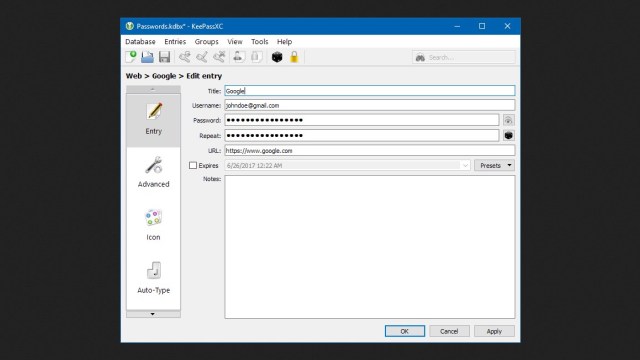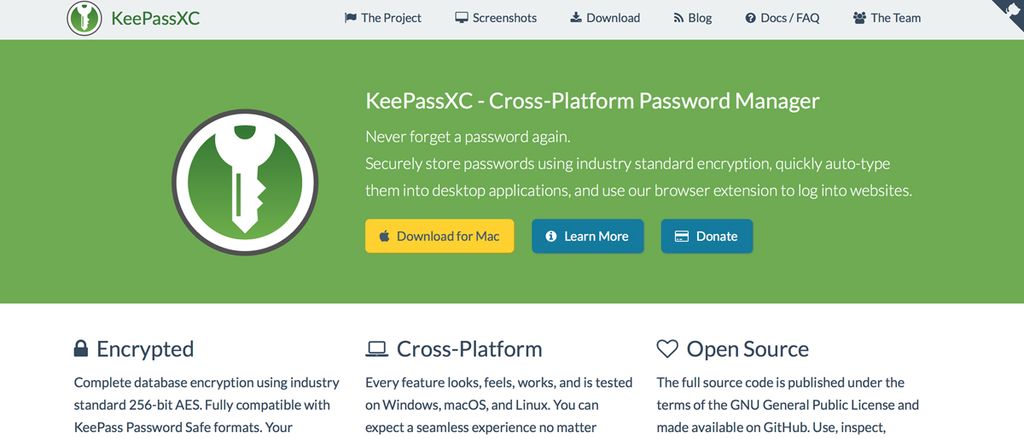

- #Keepassxc synchronization software
- #Keepassxc synchronization code
- #Keepassxc synchronization password
One problem I’ve had with pass was that the (user-facing) complex nature of it sometimes interrupted my workflow, be it with not knowing the commands to do what I want to do, forgetting to specify -c on the CLI (leaking the entire password content to the terminal window in stdout), forgetting to pass git push on my home machine and then missing the passwords on my work laptop etc. It has some great strenghts, for example it is possible to use Pass in your scripts, programs, on the CLI and to manipulate the stdout as any other terminal command output.īecause of this, creating custom scripts and programs around Pass for even a simple use-case of manipulating your passwords even if you don’t like any of the current offerings. You can initialize your new password store (created with pass init) with pass git init, commit your created passwords with pass git commit, add a git remote and sync there and back with the classic git push and git pull commands, prepended with pass ( pass git push, pass git pull etc.) PGP (compared to most passwords) has very strong security characteristics and is a proven and documented method of encryption for quite some time now.įor syncing, pass can be used in tandem with another standard program, the one and only, git. Pass uses PGP to encrypt the passwords themselves.

There are GUI applications for multiple platforms available too, as well as applications for phones, all of which can be found here Password store (I will call it simply pass from here) has no similarities with Bitwarden except the use case of saving passwords.įirst and foremost, pass in it’s original form is a command-line application ( pass), with optional extensions such as pass-otp for handling 2FA temporary codes.

For me, though, it felt a little cumbersome. It is difficult for me to say how much more difficult two factor authentication makes this exploitable, but the point stands.įor simple personal use-cases for non-technical family members I believe Bitwarden has a lot to offer.
#Keepassxc synchronization code
I also increasingly felt the web interface at could become the main possible attack surface, as anyone who would had access to the server serving that website could change the source code to intercept the credentials per user. Another major pitfall is that for every password by default, the detected URL worked off of the root domain, therefore autocompletion of passwords from a browser extension became non-functional too quickly when operating under one root domain.įor example if I had and saved, Bitwarden would offer both for autocompletion. Over time though, it subjectively felt kind of slow to use through the clients and I found the organization of the passwords not-so-great.

I must say that I was quite impressed with Bitwarden at first, as I had no prior experience with password managers other than the ones baked into your browser. It is secured with a single “master password” that also acts as the encryption and decryption key for the passwords of the user. All of the passwords that you save in your Vault at Bitwarden are hashed and salted, so even if an attacker gains access to the server(s) running the passwords databases, they would not be able to decrypt the passwords.īitwarden comes with a Web UI at and clients for a number of browsers, desktop apps, and mobile phone apps. Bitwarden #īitwarden is a SaaS or a self-hosted offering, which operates server-side and is accessible via a set of clients. The main reason for the selection of these particular password managers was that all of them operate quite differently. I have tried the following password managers over the course of three months:
#Keepassxc synchronization software
In case you don’t know, a password manager is a piece of software that holds all of your passwords and is itself protected with one master password or some other cryptographic method (or a combination of both) Over the past few months I have taken some time to tinker with a few password managers to find out which suits my needs the best and to find out the pros and cons of each one of them.


 0 kommentar(er)
0 kommentar(er)
